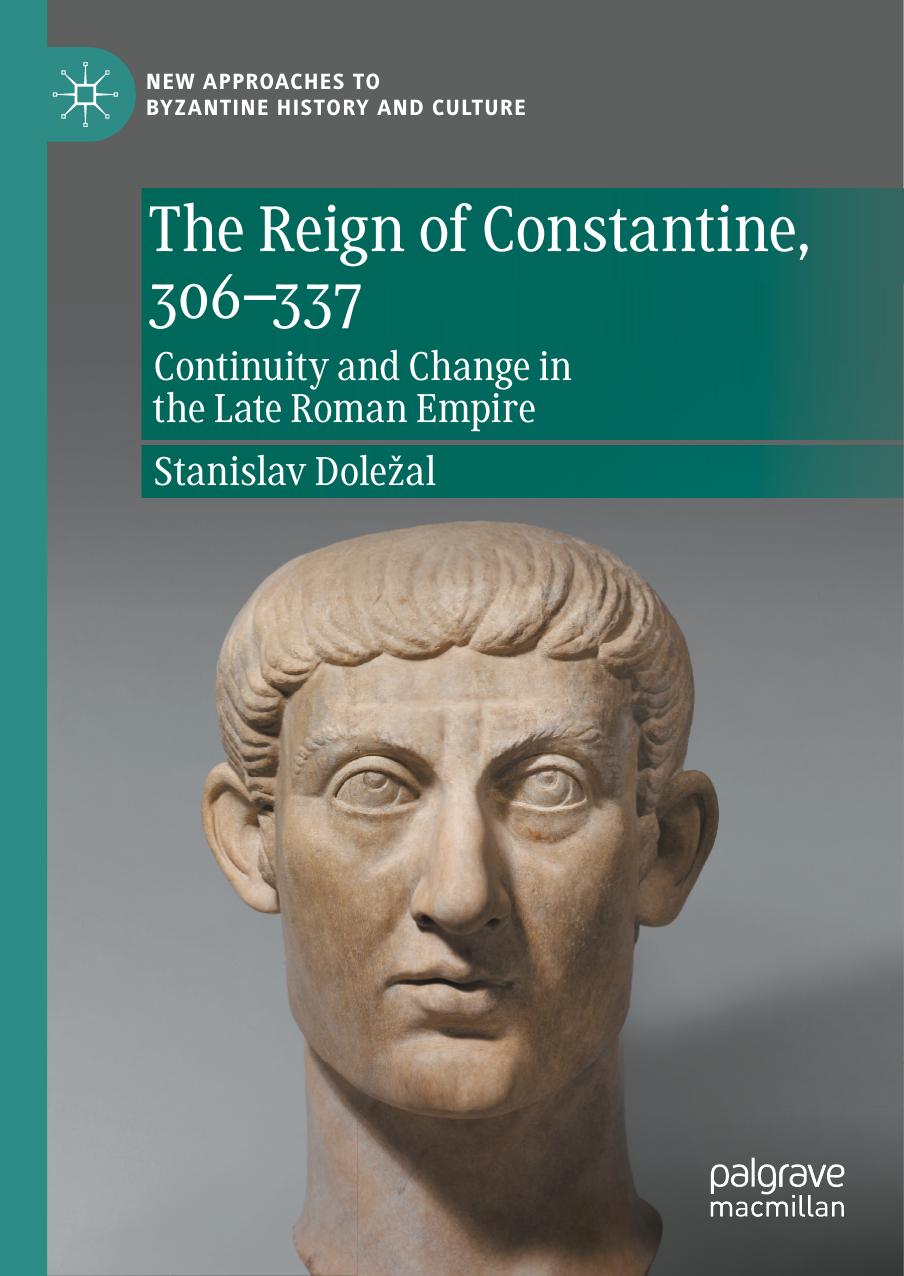The Reign of Constantine, 306â337: Continuity and Change in the Late Roman Empire by Stanislav Doležal

Author:Stanislav Doležal [Doležal, Stanislav]
Language: eng
Format: epub, pdf
ISBN: 9783030974640
Google: 4hVuEAAAQBAJ
Publisher: Springer
Published: 2022-09-15T20:42:30+00:00
The Problem of 305 CE
On 1 May 305, a ceremony was held near Nicomedia, the same place where Diocletian had once been proclaimed emperor. Lactantius describes it for us. Generals, soldiers serving at court, and representatives of distant legions were all invited to witness this solemn act in person and, in doing so, to lend it more gravitas. Diocletian, flanked by his caesar Galerius, made a speech in which he is said to have explained that old age and weariness prevented him from continuing in office; he wished to spend the rest of his life at peace and rest, and for this reason he was handing over power to his successor. Galerius became the new Eastern augustus, with Constantius set to be the new Western augustus. Diocletian took this opportunity to appoint two new caesaresâMaximinus Daia for the East and Severus for the West.
Maximinus Daia, the son of Galeriusâ sister, shared the same origin and destiny as his uncle. In fact, he was even named after himâas we saw in the previous chapter, Maximinus appears to have been Galeriusâ original name.82 His career is described for us by Lactantius: âuntil recently, he herded cattle, but then he became a soldier, protector, tribune, and finally caesarâ. Lactantius adds contemptuously that Daia was a half-barbarian (semibarbarus) who, on account of his youth, was skilled in neither soldiering nor statecraft.83 Lactantiusâ use of the term âsemi-barbarianâ may indicate mixed Roman-Carpi descentâfor example, if Galeriusâ sister had married a Carpus. We are guided down the same path by Lactantiusâ mention of the fact that, upon becoming emperor, Maximinus surrounded himself with barbarians who had previously been expelled from Dacia by the Goths; those âbarbariansâ are likely to have been Carpi (see the previous chapter). By contrast, both of Galeriusâ parents were evidently of Roman origin, as otherwise Lactantius would doubtless have jumped on such mixed ancestry. Even less is known about Severusâvirtually all we can say is that, like Maximinus, he was from Illyricum, that he was of humble birth, that he was a friend and drinking companion of Galerius, and that before his appointment he had held some position of command in the army.84
Diocletian took off his purple cloak when Maximinus came before the assembly and put it on the new caesar. At that moment, Diocletian became âthe elder augustus, father of augusti and caesaresâ (senior augustus, pater imperatorum et caesarum).85 The same ceremony took place on the same day in Milan in the presence of the abdicating Maximian, the new augustus Constantius, and the new caesar Severus. These details, reported to us by Lactantius, are not in doubt.86 However, the problem is not what did or did not happen, but whatâif Lactantius is to be believedâshould have happened. Right from the start of the ceremony, he says, all eyes were on Constantine, who was present, because apparently no one was in any doubt that he was the one who was going to be proclaimed caesar of the East (Constantinum omnes intuebantur. Nulla erat dubitatio).
Download
The Reign of Constantine, 306â337: Continuity and Change in the Late Roman Empire by Stanislav Doležal.pdf
This site does not store any files on its server. We only index and link to content provided by other sites. Please contact the content providers to delete copyright contents if any and email us, we'll remove relevant links or contents immediately.
The Power of Myth by Joseph Campbell & Bill Moyers(1013)
Half Moon Bay by Jonathan Kellerman & Jesse Kellerman(953)
A Social History of the Media by Peter Burke & Peter Burke(936)
Inseparable by Emma Donoghue(934)
The Nets of Modernism: Henry James, Virginia Woolf, James Joyce, and Sigmund Freud by Maud Ellmann(836)
The Spike by Mark Humphries;(765)
The Complete Correspondence 1928-1940 by Theodor W. Adorno & Walter Benjamin(747)
A Theory of Narrative Drawing by Simon Grennan(742)
Culture by Terry Eagleton(724)
Ideology by Eagleton Terry;(696)
Bodies from the Library 3 by Tony Medawar(682)
World Philology by(676)
Farnsworth's Classical English Rhetoric by Ward Farnsworth(674)
Game of Thrones and Philosophy by William Irwin(671)
High Albania by M. Edith Durham(659)
Adam Smith by Jonathan Conlin(648)
A Reader’s Companion to J. D. Salinger’s The Catcher in the Rye by Peter Beidler(646)
Comic Genius: Portraits of Funny People by(616)
Monkey King by Wu Cheng'en(611)
